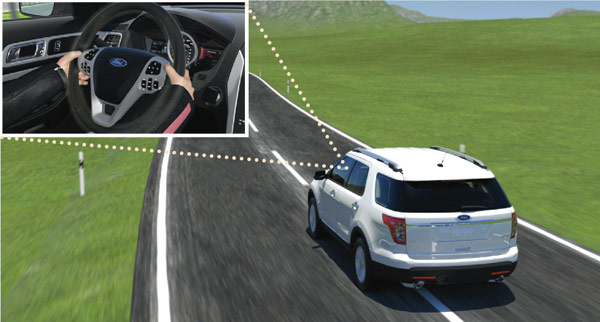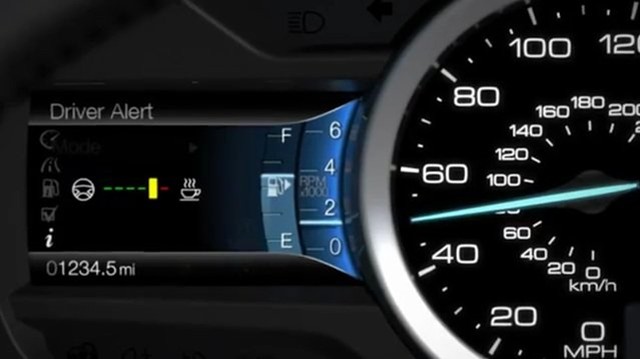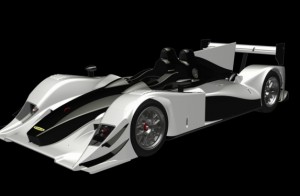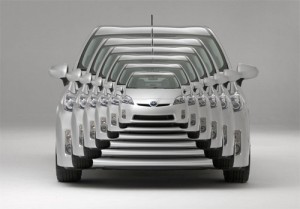Ford is trying to make up for some lost time and revenue here and they are not the first to do this kind of technology, they are pushing their own stay in your own lane package starting with the Explorer. The Driver Alert System is slated to launch in 2012 and it will include new lane keeping tech, part of the system will detect drowsy drivers and also the goal is to keep sleepyheaded drivers from destroying lives. In this alert system a camera setup will monitor one’s lane position and if they drift too far away from the straight and narrow, their steering wheel will vibrate…………………
News Heighlites:
- Ford is introducing new lane keeping technologies, including a system that can help detect drowsy drivers, to help them stay alert and in their lane; system to launch in early 2012 on the Ford Explorer
- The technology’s Driver Alert System monitors the vehicle’s lane position and can notify a driver of signs of inattentiveness with a coffee cup warning light that appears on the dashboard instrument cluster
- More than 40 percent of Americans say they have fallen asleep or nodded off while driving, according to a survey conducted by the AAA Foundation for Traffic Safety
- The Lane Keeping Alert function warns the driver by vibrating the steering wheel and sounding a warning chime, while the Lane Keeping Aid function warns the driver by applying torque at the steering wheel to direct the vehicle back into the lane
The new Ford Explorer will come with a cup of coffee for customers who opt for an innovative new Lane Keeping System that can warn drivers if it detects they are getting too tired to drive. Ford will introduce in early 2012 an innovative Lane Keeping System with three unique features designed to help drivers stay in control behind the wheel, including a Driver Alert System that can notify drivers if it detects signs of drowsiness. In this case, a coffee cup light will appear on the dashboard instrument cluster to suggest the driver take a break. “The Explorer is loaded with new innovations, including this new lane keeping technology that helps drivers stay in control of their vehicle if they drift out of their lane or show signs of drowsiness,” says Raj Nair, vice president, Engineering, Ford Global Product Development. The system uses a small forward-facing camera mounted on the windshield behind the rearview mirror, and is able to identify lane markings on both sides of the vehicle. When the vehicle is on the move, the camera looks at the road ahead and predicts where the vehicle should be positioned relative to the lane markings. “Our engineering teams tested this technology for thousands of miles in many parts of the country to help ensure it performs on a wide range of roads with different lane markings,” said Michael Kane, vehicle engineering supervisor for Driver Assistance Technologies for Ford, who helped develop the technologies. The Lane Keeping System is designed to help the driver avoid leaving his or her lane unintentionally. This new technology consists of the Driver Alert System, Lane Keeping Alert and Lane Keeping Aid. The Driver Alert System is designed to help alert drowsy drivers by monitoring the vehicle’s movement compared to lane markings that are tracked by a camera mounted on the windshield. If the system detects a driving pattern consistent with a drowsy driver, a first-level chime will sound and a coffee cup warning will appear on the dashboard instrument cluster to recommend the driver take a break. If the driver does not respond to this alert and the system continues to sense the driver is fatigued, another warning and chime will be issued. Drivers can monitor their condition on the dashboard at any time, even without receiving warnings. If they approach the yellow warning range, they should rest as soon as possible.
All information is reset as soon as the driver stops and either opens the door or turns off the engine. More than 40 percent of Americans say they have fallen asleep or nodded off while driving, according to a survey conducted by the AAA Foundation for Traffic Safety. The Lane Keeping Alert is designed to help drivers avoid unintentional lane changes. When the system detects the vehicle drifting close to lane markings, it will alert the driver through a vibration in the steering wheel to naturally direct the driver’s attention to where it is required. This provides the driver with valuable time to react and steer the vehicle back into its lane. To calculate the lane position, Lane Keeping Alert uses data from the front camera on the windshield. A display in the dashboard instrument cluster lets the driver know when the system is operational as not all roads are well-marked. Lane Keeping Aid takes this technology even further by providing steering torque to alert the driver of the need to steer back toward the center of the lane. The system calculates the amount of steering required based on factors such as the distance to the lane markings, yaw angle and curve radius determined from the front camera and other sensors in the vehicle. If the driver prefers, the Lane Keeping Alert can work in combination with the Lane Keeping Aid. When the driver signals, the system is deactivated so that the vehicle can change lanes without intervention. The driver can override the Lane Keeping Aid at any time through counter steering, hard braking or fast accelerating. In these cases, the system recognizes that the driver has intentionally changed lanes. While steering torque is being applied, the system also can display a warning if a torque sensor determines the driver may not have his or her hands on the steering wheel based on the driver’s steering efforts. The sensitivity of the setting can be adjusted between normal and increased, which moves the warning zones in closer to the center of the lane. The intensity of the steering wheel vibrations can be adjusted as well between low, medium and high. The last-known setting for each selection is stored so it does not have to be set each time the system is activated. The system features must be turned on by the driver, and will stay on unless the driver turns them off. The customer chooses which feature is preferred: alert, aid or both. The systems work both day and night with low-beam headlights. Gray lines indicate the system is suppressed because the vehicle is traveling at less than the 40-mph activation speed, the road is poorly marked, or adverse environmental conditions do not allow the camera to determine road markings.
[ttjad keyword=”auto”]





